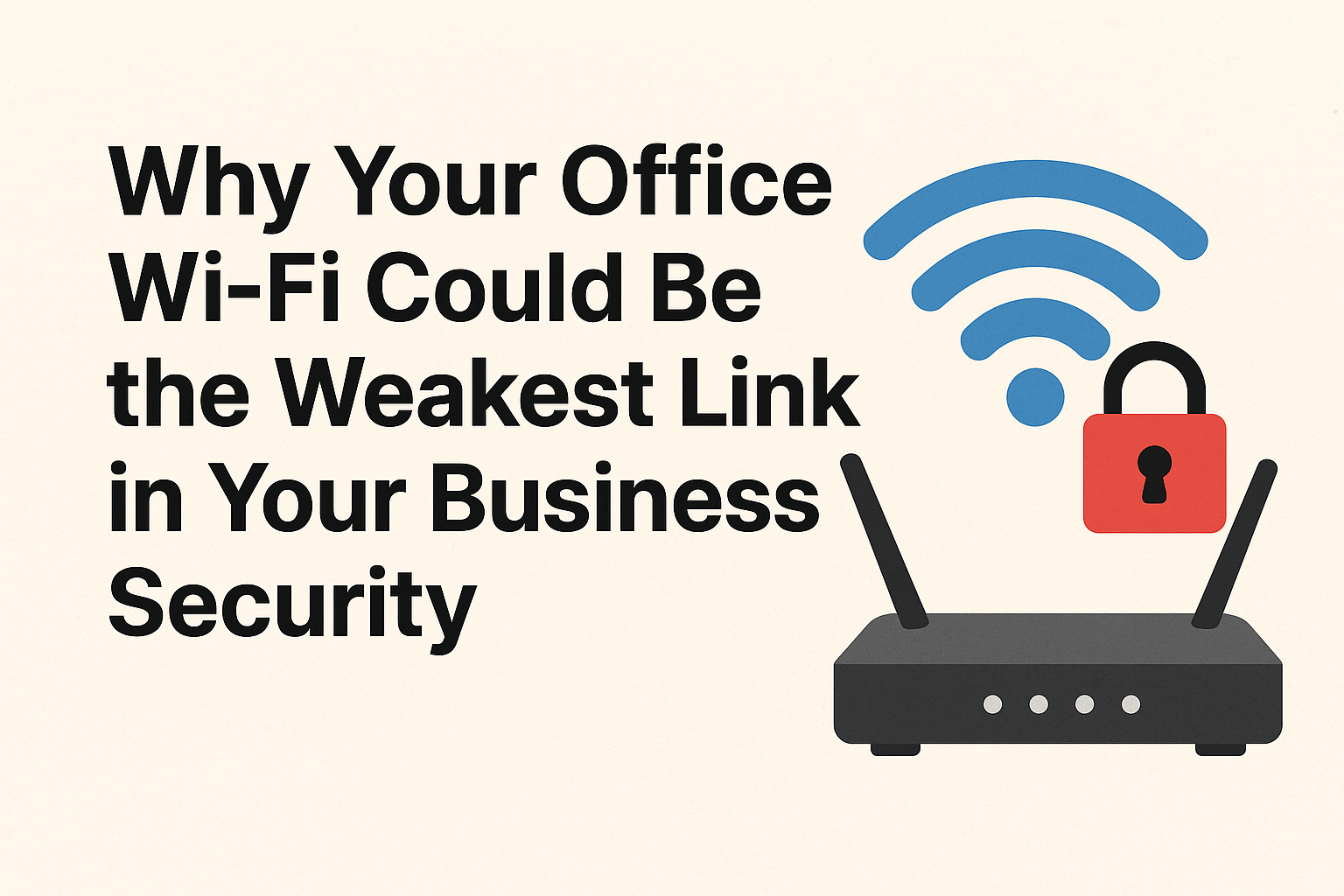This post is also available in: Bahasa Malaysia (Malay) Bahasa Indonesia (Indonesian)
Your business data might be sitting behind a locked office door — but if your WiFi is open to attack, hackers don’t need a key. In this article, we’ll explain in simple terms how Wi-Fi works, why unsecured networks are a hacker’s playground, and the kinds of damage that can be done (think stolen customer data, locked files, or even spying on your emails).

Key Points:
- How hackers “listen in” on WiFi traffic
- What an unsecured network looks like to an attacker
- Why small businesses are not “too small” to be targeted
When people think about business security, they often picture CCTV cameras, locked doors, or even antivirus software on their computers. But for many small businesses, the real weak spot isn’t in plain sight — it’s quietly broadcasting from a corner of your office: your WiFi network.
Why Wi-Fi Security Matters
Your office WiFi is the gateway that connects your computers, printers, cloud systems, and even payment devices to the internet. If it’s not properly secured, it can be like leaving your front door wide open — anyone with the right tools (or sometimes just the right location) could sneak in.
Once inside your network, cybercriminals can:
- Steal sensitive business data — like customer details, invoices, and payment records.
- Install malware or ransomware — locking you out of your own files until a ransom is paid.
- Monitor your internet traffic — potentially capturing passwords, emails, and confidential business plans.
And the worst part? You might not even notice until it’s too late.
Common Office WiFi Mistakes
Many small businesses unknowingly make their Wi-Fi easy to attack. Some of the most common mistakes include:
- Using the default router password — the one printed on the back of the device is often publicly known or easy to guess.
- No separation between guest and staff networks — allowing visitors (or even delivery drivers) to connect to the same network as your business systems.
- Old or outdated router firmware — security patches aren’t just for computers; your network equipment needs them too.
- Weak or outdated encryption — older Wi-Fi security protocols like WEP can be cracked in minutes.
The Business Cost of a Breach
A WiFi security breach doesn’t just mean replacing a router. It can lead to:
- Loss of customer trust.
- Potential legal issues under Malaysia’s Personal Data Protection Act (PDPA).
- Disruption to business operations — costing time and money.
For small businesses, even a short downtime or data leak can have lasting consequences.
Simple Steps to Strengthen Your WiFi Security
Here are some quick actions you can take today:
- Change the router’s admin password to something strong and unique.
- Set up a separate guest WiFi for visitors and limit its access.
- Update your router’s firmware regularly.
- Use WPA3 encryption if your devices support it (or at least WPA2).
- Limit who knows your Wi-Fi password — and change it regularly.
These steps may seem small, but they close the “open doors” hackers often look for.
Up Next: In our next article, we’ll look at “How Hackers Can Get Into Your Network — Even Without Wi-Fi” — breaking down the real-world tricks cybercriminals use and how to block them before they strike.
Did you find this article helpful? Please rate and also share your thoughts in the comments section below.
